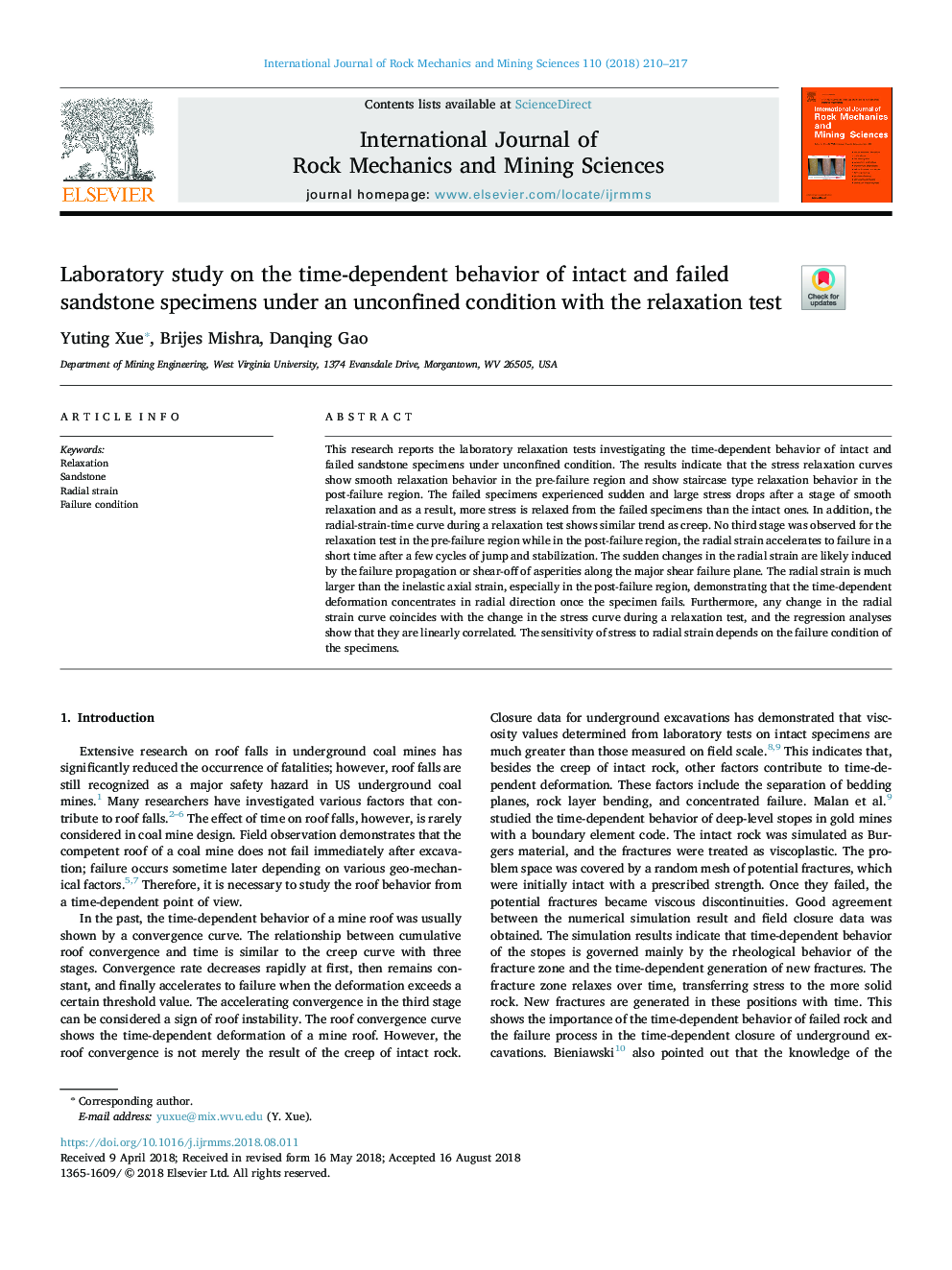| Article ID | Journal | Published Year | Pages | File Type |
|---|---|---|---|---|
| 11004159 | International Journal of Rock Mechanics and Mining Sciences | 2018 | 8 Pages |
Abstract
This research reports the laboratory relaxation tests investigating the time-dependent behavior of intact and failed sandstone specimens under unconfined condition. The results indicate that the stress relaxation curves show smooth relaxation behavior in the pre-failure region and show staircase type relaxation behavior in the post-failure region. The failed specimens experienced sudden and large stress drops after a stage of smooth relaxation and as a result, more stress is relaxed from the failed specimens than the intact ones. In addition, the radial-strain-time curve during a relaxation test shows similar trend as creep. No third stage was observed for the relaxation test in the pre-failure region while in the post-failure region, the radial strain accelerates to failure in a short time after a few cycles of jump and stabilization. The sudden changes in the radial strain are likely induced by the failure propagation or shear-off of asperities along the major shear failure plane. The radial strain is much larger than the inelastic axial strain, especially in the post-failure region, demonstrating that the time-dependent deformation concentrates in radial direction once the specimen fails. Furthermore, any change in the radial strain curve coincides with the change in the stress curve during a relaxation test, and the regression analyses show that they are linearly correlated. The sensitivity of stress to radial strain depends on the failure condition of the specimens.
Keywords
Related Topics
Physical Sciences and Engineering
Earth and Planetary Sciences
Geotechnical Engineering and Engineering Geology
Authors
Yuting Xue, Brijes Mishra, Danqing Gao,
